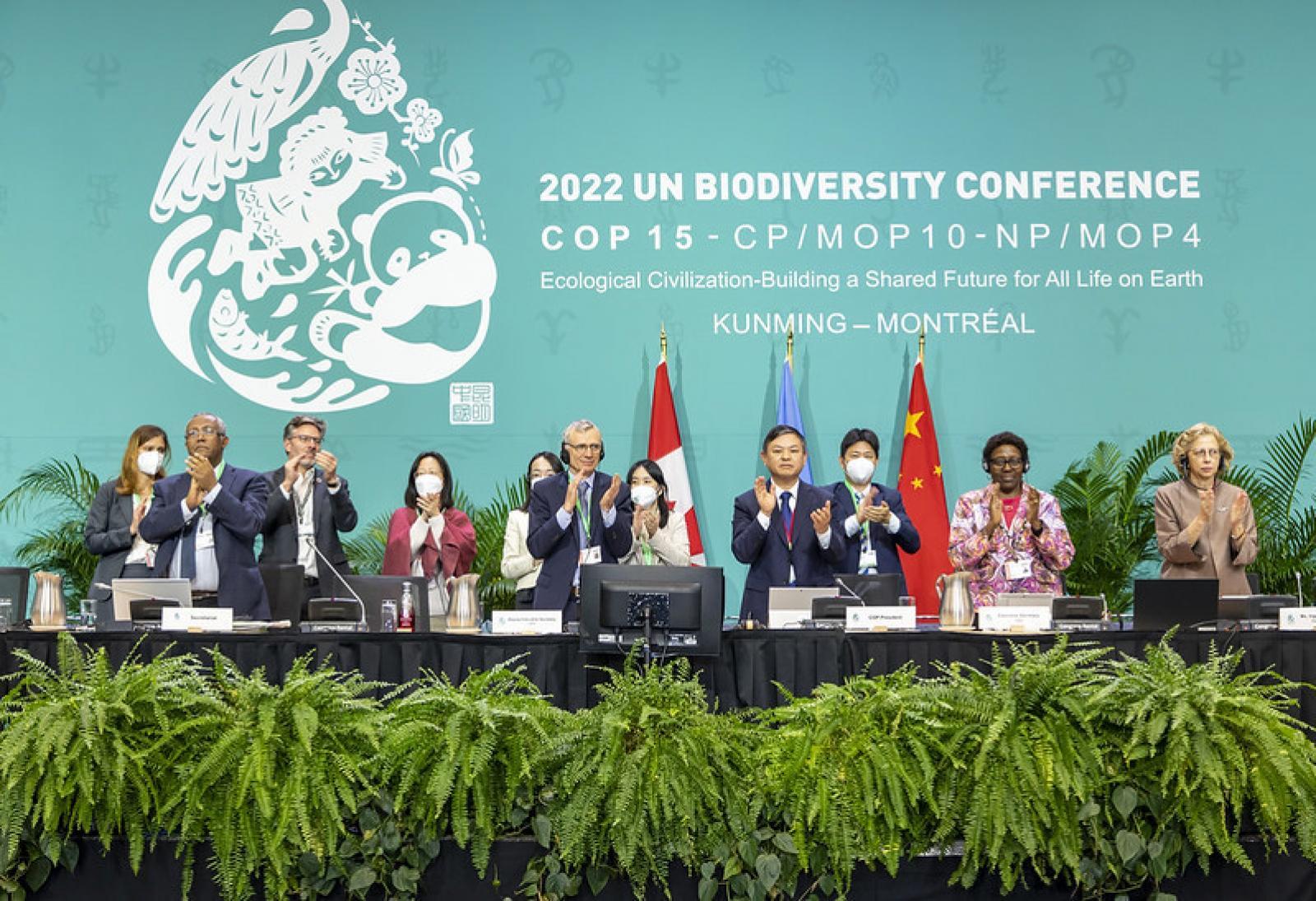
Global Biodiversity Framework adopted at COP15
The United Nations Biodiversity Conference (COP15) ended in Montreal, Que., on 19 December 2022 with an agreement to guide global action on nature through to 2030. Representatives from 188 governments have been gathered at the summit from Dec. 6-19, 2022.
"Chaired by China and hosted by Canada, COP 15 resulted in the adoption of the Kunming-Montreal Global Biodiversity Framework (GBF) on the last day of negotiations," summit organizers said. "The GBF aims to address biodiversity loss, restore ecosystems and protect indigenous rights. The plan includes concrete measures to halt and reverse nature loss, including putting 30 per cent of the planet and 30 per cent of degraded ecosystems under protection by 2030. It also contains proposals to increase finance to developing countries – a major sticking point during talks.
"The stakes could not be higher: the planet is experiencing a dangerous decline in nature as a result of human activity. It is experiencing its largest loss of life since the dinosaurs. One million plant and animal species are now threatened with extinction, many within decades."
 The UN Biodiversity Conference (COP15) was held in Montreal, Que. Dec. 6-19, 2022.
The UN Biodiversity Conference (COP15) was held in Montreal, Que. Dec. 6-19, 2022.
The GBF consists of four overarching global goals to protect nature, including: halting human-induced extinction of threatened species and reducing the rate of extinction of all species tenfold by 2050; sustainable use and management of biodiversity to ensure that nature’s contributions to people are valued, maintained and enhanced; fair sharing of the benefits from the utilization of genetic resources, and digital sequence information on genetic resources; and that adequate means of implementing the GBF be accessible to all Parties, particularly Least Developed Countries and Small Island Developing States.
United Nations Environment Program (UNEP) Executive Director, Inger Andersen, emphasized that implementation is now key: “Success will be measured by our rapid and consistent progress in implementing what we have agreed to. The entire UN system is geared to support its implementation so we can truly make peace with nature.”
The GBF also features 23 targets to achieve by 2030, including:
- Effective conservation and management of at least 30 per cent of the world’s land, coastal areas and oceans. Currently, 17 percent of land and *8 per cent of marine areas are under protection
- Restoration of 30 per cent of terrestrial and marine ecosystems
- Reduce to near zero the loss of areas of high biodiversity importance and high ecological integrity
- Halving global food waste
- Phasing out or reforming subsidies that harm biodiversity by at least $500 billion per year, while scaling up positive incentives for biodiversity conservation and sustainable use
- Mobilizing at least $200 billion per year from public and private sources for biodiversity-related funding
- Raising international financial flows from developed to developing countries to at least US$ 30 billion per year
- Requiring transnational companies and financial institutions to monitor, assess, and transparently disclose risks and impacts on biodiversity through their operations, portfolios, supply and value chains
Finance played a key role at COP15, with discussions centring on how much money developed countries will send to developing countries to address biodiversity loss. It was requested that the Global Environment Facility set up a Special Trust Fund – the GBF Fund – to support the implementation of the GBF, in order to ensure an adequate, predictable and timely flow of funds.
Countries also approved a series of related agreements to implement the GBF, including on planning, monitoring, reporting and review, which are all vital to ensure progress is made – in the words of the GBF, to ensure that there is not “a further acceleration in the global rate of species extinction, which is already at least tens to hundreds of times higher than it has averaged over the past 10 million years.”
See the following links for more information on biodiversity:
- Speech by Inger Andersen: A Framework for all Life on Earth
- New partnership aims to accelerate GBF implementation
- Five key drivers of the nature crisis
- Leaders explore how to equitably share the benefits of nature
- Three cutting-edge financial tools helping to mend the planet
- Fragile mountain ecosystems on the mend around the world
- Renowned economist strives to calculate the value of nature
- Tapping into indigenous knowledge to protect nature